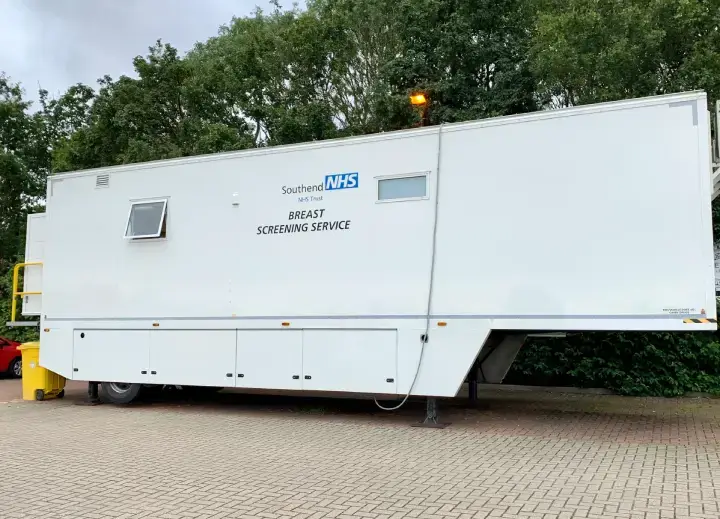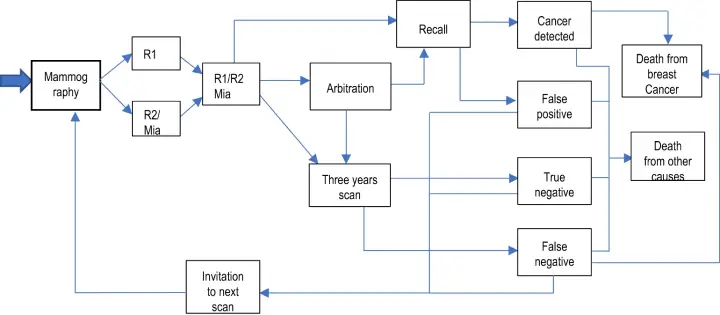NHS Breast Screening: Is AI the Key to Cost Savings?
AI | 08-11-2023 | By Liam Critchley
Breast cancer is the most common cancer for women. Breast cancer is also the most common type of cancer in the UK and around the world, with over 55,000 cases every year in the UK alone. Of these cases, around 11,000 die each year. There are currently a lot of patients who survive breast cancer in the UK, with 76% of patients surviving for ten or more years after diagnosis. This has primarily been due to earlier diagnoses being commonplace nowadays compared to in the past.
In the UK, the ability to screen and diagnose breast cancer has been attributed to a 2-week wait cancer diagnosis pathway called the NHS National Breast Screening Programme. This programme has been found to be cost-effective―and in a time where NHS funding is consistently being cut, but the population is ever growing, studies are coming out that look at where these processes can become even more cost-effective, and the NHS trusts can get the most out of the funding they receive. In this latest study, researchers have looked at whether implementing AI into the National Breast Cancer Screening programme could impart further savings, making it more cost-effective.
Recent advancements in AI, as highlighted in a Nature Communications study, have shown promising results in enhancing the cost-effectiveness of breast cancer screening. The study underscores the potential of AI systems, like Mia®, to maintain high standards of accuracy in diagnosis while significantly reducing the financial and staffing pressures on the NHS. This aligns with the NHS's commitment to leveraging technology for improved patient outcomes, as evidenced by the systematic approach of the NHS Breast Screening Programme, which invites women aged 50 to 70 for regular screenings every three years.
 Billericay, UK - August 21, 2021: An NHS mobile unit for breast cancer screening stationed in a Billericay, Essex car park, UK.
Billericay, UK - August 21, 2021: An NHS mobile unit for breast cancer screening stationed in a Billericay, Essex car park, UK.
The UK’s Breast Cancer Screening Programme
The UK NHS Women’s National Breast Screening programme is an initiative that aims to detect breast cancer early on in its development. The standard approach for testing requires mammograms to be taken and the results to be read independently by two qualified radiology staff. If there’s ever a disagreement between the two radiology readers, then a third independent reader is required. This process maximises accuracy and reduces the recall rate, but it is a labour-intensive process, and it requires a number of personnel to take part. The NHS workforce is already strained, so if there are ways to make a diagnosis easier by requiring less personnel or making the process cheaper (or ideally both), then it’s something that should be looked at.
The integration of AI into the NHS Breast Screening Programme could be a game-changer. With the NHS facing a radiology workforce crisis, the DES model from the Nature Communications study suggests that AI could offer a sustainable alternative. The model's base case scenario showed that AI technology could be cost-effective, potentially reducing the need for outsourcing services, which is a significant expense for the NHS.
This is why AI is being considered, as it offers a potential alternative solution to the multiple reader situation in current diagnostic approaches. AI has already been shown to be just as effective as the two-reader approach, but its cost-effectiveness―including set-up costs, maintenance and scan costs―has not been evaluated to see how it compares to the traditional approaches and whether it is indeed an economically feasible alternative.
The DES model's findings are particularly relevant given the NHS Digital's report on the current state of breast screening. The NHS invites women between the ages of 50 and 70 for screenings, aiming to reduce mortality through early detection. The cost-effectiveness of AI systems like Mia® could allow for more frequent and accessible screenings, potentially saving more lives through earlier intervention.
Looking Towards AI Technology to Lower the Cost of the Screening Service
AI technologies that have been developed in recent years could help these screening programs move on from requiring two expert readers in a safe and effective manner. It was determined back in 2020 by McKinney et al. that an AI system is not inferior to a diagnosis performed by two readers. One of the key AI technologies that are being considered for the NHS and their breast cancer screening programme is called mammography intelligent assessment―known commercially as Mia®―and has been developed by Kheiron Medical Technologies.
For AI technologies like Mia® to be successful within large organisations like the NHS, it need to be cost-effective compared to standard practices (it would save on personnel time, even if it wasn’t effective on cost), but ideally, it should also be cheaper―as there needs to be clear evidence that a new technology is going to improve the status quo within publicly funded healthcare systems like the NHS.
Are AI Technologies Cost-Effective for the NHS?
A recent study has highlighted how cost-effective the Mia® AI system would be for the National Breast Screening Programme by assessing the price, set-up cost, maintenance cost, and outsourcing costs combined with the effectiveness of the Mia® system. In this study, the costs and cost-effectiveness of the Mia® system (with a single human reader) were compared against the standard procedure of using two reader personnel to diagnose breast cancer.
The researchers used a discrete event simulation (DES) model to estimate the cost-effectiveness of the Mia® technology and to recreate the breast cancer screening process in the UK while also capturing the natural history of breast cancer. The model accounts for both healthcare and social care perspectives and follows 100,000 women from age 19 for life. The model uses quality-adjusted life years (QALYs) as the health outcome measurement.

Diagram of the constructed DES model for both strategies. R1 and R2 denote the first and second radiologist readers, respectively. Mia® represents the AI system used in place of a second human reader. In scenarios where Mia® is evaluated, it substitutes the role of the second radiologist reader. (Click to enlarge)
Comparative Cost Analysis
The model took into account a one-off set-up cost of £35,000, the price per scan of £4.72 (which included the maintenance fees) and compared them against the cost-per-scan performed by a radiologist―which typically has a base cost of £5.90 per scan including overheads and training. After analysing both methods, the cost per reading for the Mia® system was £10.62, but the cost of the standard procedure with two readers came out at £11.80 per scan (as the extra cost for a second reader in the NHS comes to an extra £5.90). The sensitivity and specificity of the Mia® were also comparable to the standard procedure (less than 1% difference in both sensitivity and specificity of the two methods).
Because there are not always specialists available at every location all the time, the study also looked at the use of locum (outsourced) specialists. Three different price ranges for locums were used, including 10% and 20% of the service covered at £10.30 per reader, and 10% of the service covered at ±20% over the price per reader. The results of the locum analyses showed that the cost saving of using Mia® for locum procedures came out to £6.75, £8.38, and £10.02 per woman based on the three different price ranges. The value of Mia® was also found to increase with increasing locum use, and the highest cost-effectiveness was found when the locum use was at 20%―but the use of Mia® was found to be cost-effective across the board while providing a similar level of accuracy.
Because the Mia® system not only offers a way to reduce the need for specialist personnel from two readers to one―freeing up more time where the radiologist can be performing other duties and providing extra services―but is also cost-effective and has direct savings compared to standard procedures. Not everything can be measured financially, and the ability for there to be more personnel on hand to help in a strained healthcare system could be invaluable and the monetary savings could be a bonus for each healthcare trust (so long as they’re willing to pay the upfront costs). Overall, the Mia® system has shown that it could be a valuable tool for the NHS and has the potential to improve the already successful National Breast Screening Programme.
In conclusion
The NHS's exploration of AI technologies for breast cancer screening is not just a pursuit of innovation for its own sake. It is a thoughtful response to the pressing need for more efficient healthcare solutions. As the NHS Digital data shows, regular screening is crucial for early detection and treatment success. The promising results of AI systems like Mia® from the Nature Communications study offer a glimpse into a future where technology and healthcare go hand in hand to deliver better care and improved patient outcomes at a reduced cost.
References:

